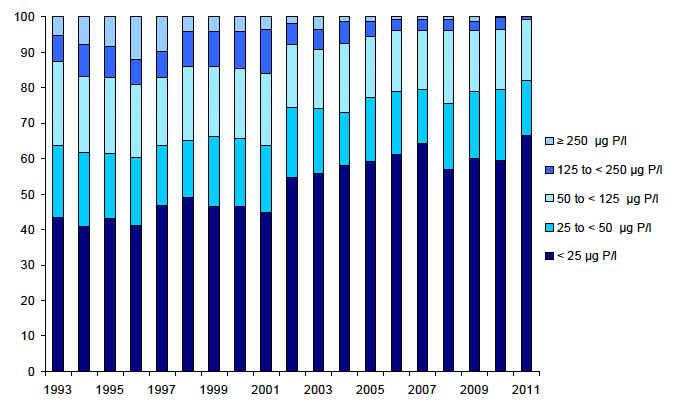Key Scottish Environment Statistics 2012
This publication aims to provide an easily accessible reference document which offers information on a wide range of environmental topics. It covers key datasets on the state of the environment in Scotland, with an emphasis on the trends over time wherever possible.
Orthophosphate Concentrations in Rivers[15]: 1993-2011
Distribution of mean orthophosphate concentrations, percentage of sites[11] within each band

Raised levels of orthophosphate in freshwaters may lead to eutrophication. The main source of phosphorus is diffuse pollution from agriculture, but there is also a risk that discharges from waste water treatment works contain phosphates.
The percentage of sites with a mean orthophosphate concentration <25 µg P/l rose to 64% in 2007, decreased to 57% in 2008, then settled around 60% in 2009 and 2010. In 2011 the percentage increased to peak at approximately 67%. The percentage of sites with a mean orthophosphate concentration ≥ 125 µg P/l has fallen gradually since 2001. In 2011, less than 1% of sites had mean orthophosphate concentrations ≥ 125 µg P/l.
Under the Urban Waste Water. Treatment Directive (UWWTD) (91/271/EEC), catchments where nutrient levels are considered to be high are designated as sensitive areas. Discharges into waters that have been designated as sensitive require additional treatment to remove nutrients.
Contact
Email: Sandy McPhee
There is a problem
Thanks for your feedback